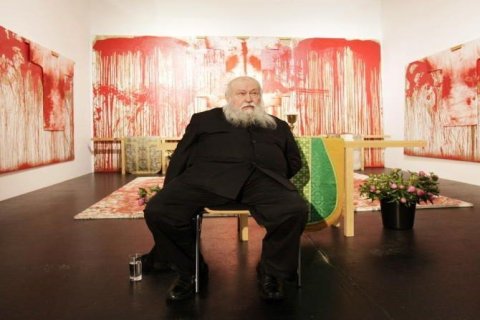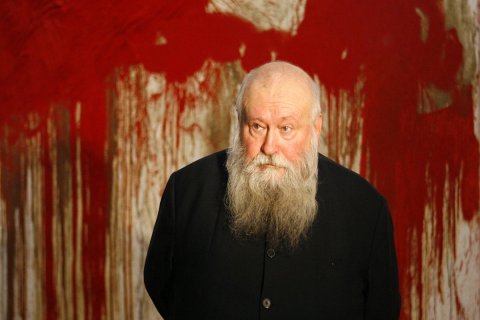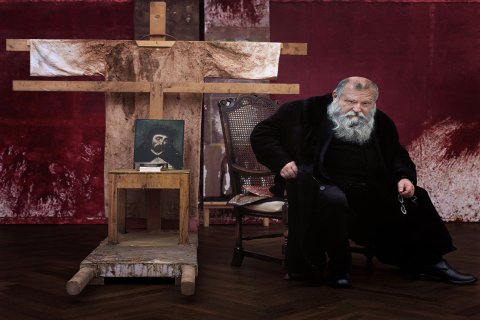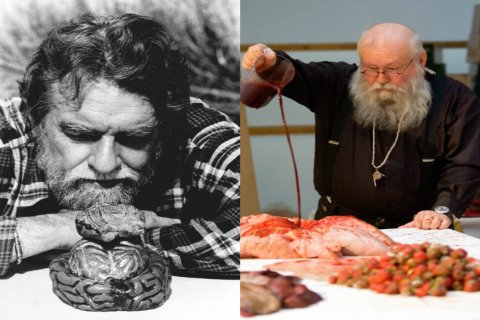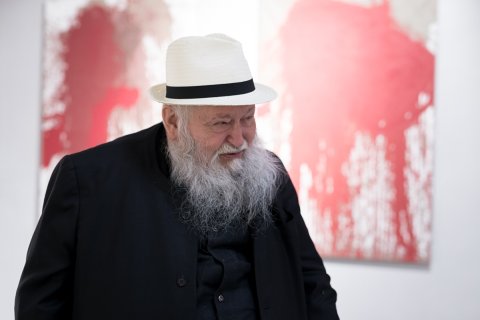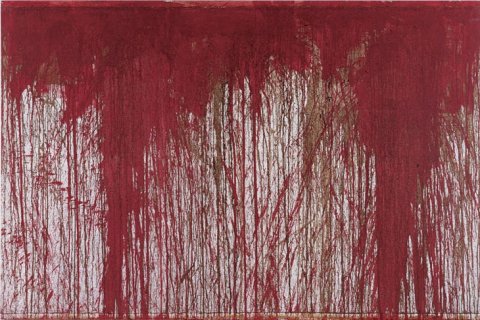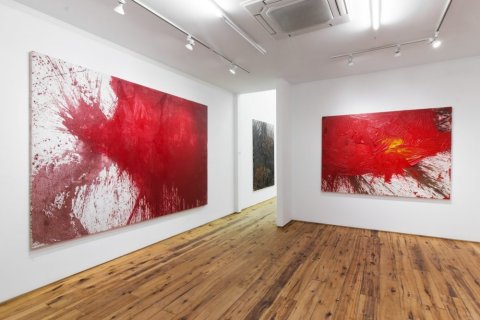Hermann Nitsch

Hermann Nitsch (born August 29, 1938) is an Austrian artist known for his controversial performances and installations. He is a central figure in the Viennese Actionism movement, which emerged in the 1960s. Nitsch's work is often characterized by its use of blood, animal carcasses, and other organic materials. He has been criticized for his graphic and violent imagery, but he has also been praised for his originality and his commitment to pushing the boundaries of art.
Nitsch was born in Vienna, Austria. He studied painting and sculpture at the Academy of Fine Arts Vienna, where he was a student of Ernst Fuchs and Arnulf Rainer. In the early 1960s, Nitsch began to experiment with performance art. He staged his first public performance, "The Orgies Mysteries Theatre," in 1963. This performance involved the ritualistic slaughter of an animal and the use of blood and entrails as artistic materials.
Nitsch's performances were often met with controversy and opposition. In 1967, he was arrested and charged with obscenity after he staged a performance in which a cow was slaughtered in front of an audience. However, Nitsch continued to create performances and installations, and he eventually gained recognition as a major figure in the international art world.
In 1971, Nitsch founded the Orgien Mysterien Theater (OM Theatre), a performance group dedicated to his artistic vision. The OM Theatre has staged numerous performances around the world, and it has become one of the most influential performance art groups in history.
Nitsch's work has been exhibited in museums and galleries around the world. He has also published several books and articles on art and performance. He is considered one of the most important and controversial artists of the 20th century.
Nitsch's work has been the subject of much debate and criticism. Some critics have accused him of being a sadist and a misogynist. Others have argued that his work is a profound and disturbing exploration of the human condition. Despite the controversy, Nitsch remains one of the most important and influential artists of his generation.
Here are some additional facts about Hermann Nitsch:
- He is the recipient of numerous awards, including the Austrian State Prize for Performance Art (1998) and the Golden Lion at the Venice Biennale (1997).
- His work is represented in major museums around the world, including the Museum of Modern Art in New York, the Tate Modern in London, and the Centre Pompidou in Paris.
- He is a controversial figure, and his work has been the subject of much debate and criticism.
- He continues to create performances and installations, and he is considered one of the most important and influential artists of his generation.
